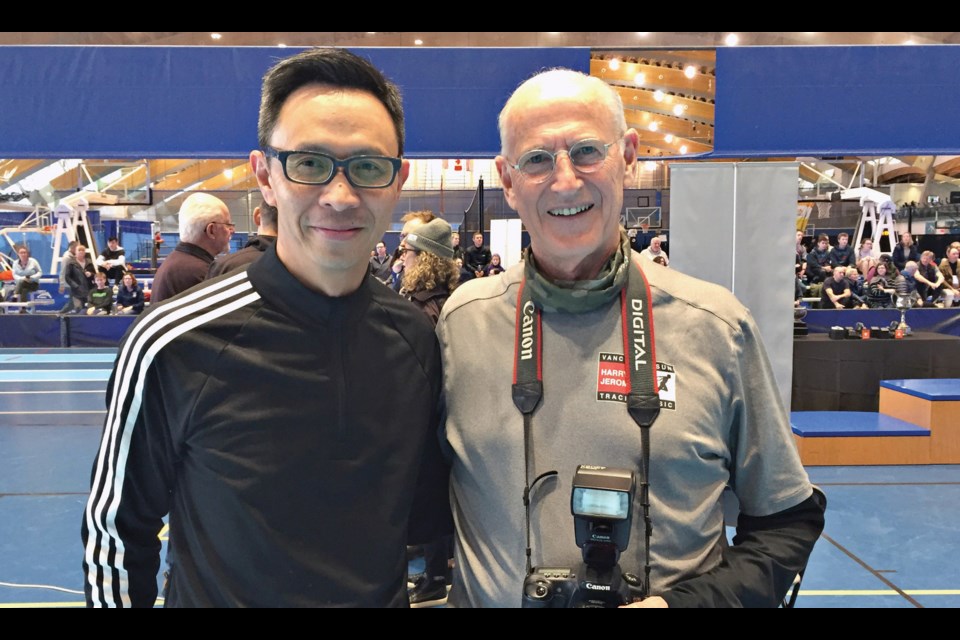The man who has done so much for track and field in this country is forever grateful of the support he has received from his hometown.
It was back in the early 1960s when Dr. Doug Clement and his wife Diane were encouraged by the city to launch a track and field club. The Kajaks were soon formed and a track at Minoru Park followed. The 400-metre oval has since been re-named Clement track in their honour.
“My wife and I had moved to Richmond where I had opened a medical practice. The recreational department was housed in a broom closet back then,” chuckled the now 84-year-old Clement — a one-time world class sprinter who competed in the 400-metre event at the 1952 Olympic Summer Games in Helsinki.
The Clements have done so much more for track and field since.
Doug created the Achilles International Society in 1964 to help promote the sport and bring elite competition to Vancouver.
Its hard work eventually led to the Harry Jerome International Track Classic which is now entering its 35th year and welcomed Canadian sprint star Andre De Grasse to a soldout Perry Percy Stadium in Coquitlam last summer.
The continued strong relationship with Richmond paved the way for the Jerome Indoor Games to be launched in 2011 after the Olympic Oval transformed from a speed skating track to a world class multiple-sport facility. The conversion included a five-lane 200 metre oval and a 110-metre sprint track. It’s one of only two indoor tracks on the west coast.
The eighth edition took place last Saturday, attracting nearly 500 athletes, the highest number of participants yet.
“If I remember correctly, the very first meet coincided with the 50th year reunion of Kajaks on the same day,”continued Clement. “We had 55 Kajaks that made Olympic teams over those years including several medalists.
“It’s been an amazing legacy in Richmond itself just to see their aggressiveness in making this sport what it is and developing as many Olympians as we have. Richmond is really the heart of that.
“We lobbied very hard to have this (indoor) track. Over our years with the club, every mayor we got to know well. Malcolm Brodie was instrumental in getting this track in here. He was supportive of the opportunity with the conversion of the facility. We worked hard with him and council to get it approved. It has worked out so amazingly well.”
Throughout his remarkable career, Clement has had the opportunity to meet many world class athletes as a member of Canada’s Olympic Team staff. Yet, he admits it’s meets like the Jerome Indoor Games that he finds most gratifying. The competition attracted entries ranging from age eight to 80.
“This is the heart of the sport. This is what it is all about. When you start moving up towards the Olympic Games you start getting into the international politics and a lot of other issues. This is where you get the greatest satisfaction I believe. You get the purity of it,” he said.
“We were part of the founding group for the Sun Run and it gives you the same sort of inclusion. Just get out there to exercise and improve your health. We are very lucky to be here at the oval and Richmond has played a massive role.”
As for the Jerome Outdoor Classic, the meet will return to Swangard Stadium next summer after a $1.2 million upgrade to the Burnaby venue that includes a new world class Rekortan 99 track surface.
The Achilles International Society emptied out its reserve funds and contributed $250,000 towards the project. Clement is confident the Classic will be welcoming back De Grasse who has fully recovered from a hamstring injury that kept him out of the World Championships last August.
He is part of the Canadian team heading to the Australia in April for the Commonwealth Games.



